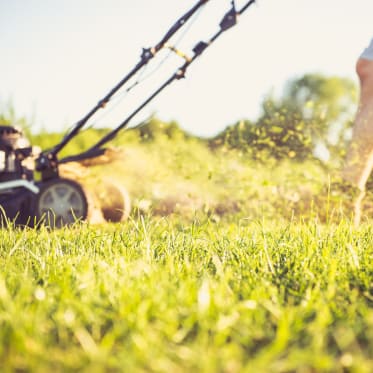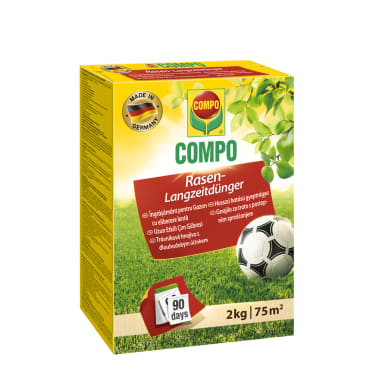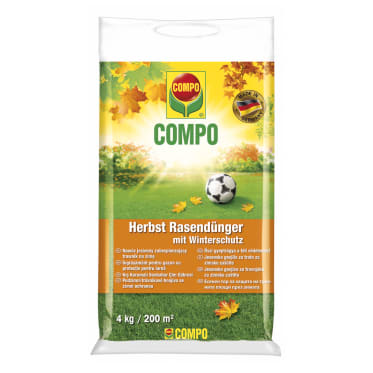Frequent search terms
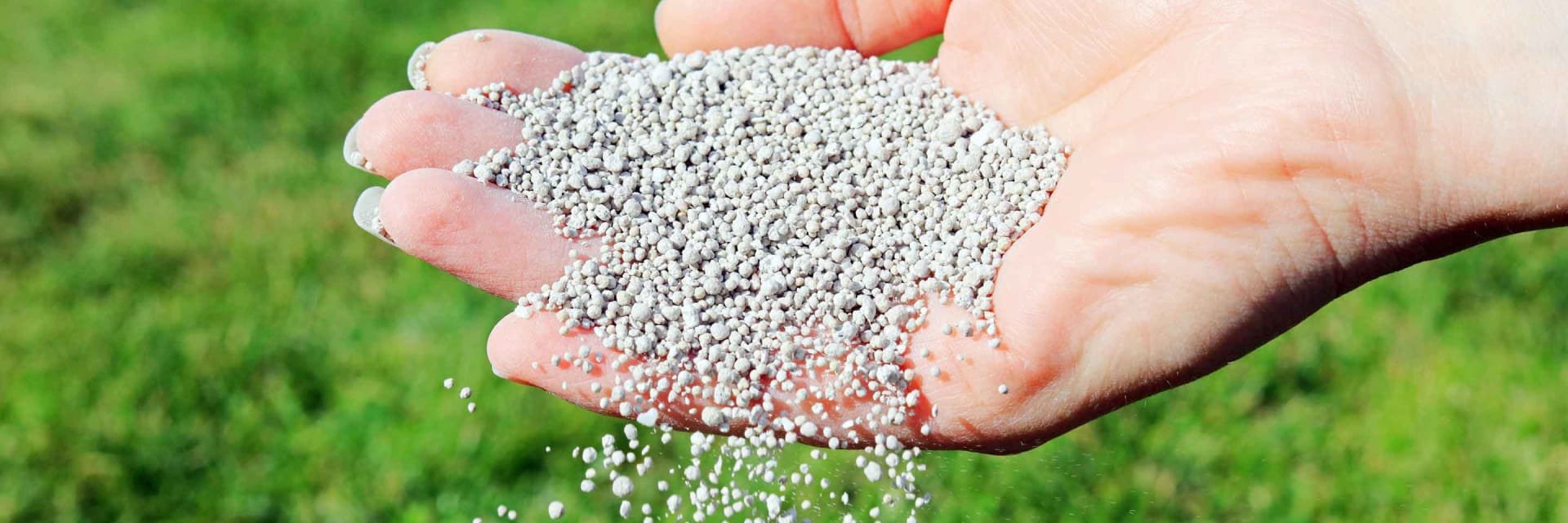
- COMPO
- Guide
- Plant Care
- Lawns
- Fertilisation and weed control
- Fertilising lawns made easy: Tips and tricks for your lawn
Fertilising lawns made easy
Only a healthy lawn is truly beautiful. It is one of the areas of the garden with the highest nutrient requirements. This comes as no surprise: it has to cope with a lot and needs to be able to withstand children playing, garden parties, moss and weeds, as well as all kinds of weather. And this is only possible if it gets regular nutrients in the form of fertiliser. We show you what should be kept in mind when fertilising lawns.
Why should you regularly fertilise your lawn?
Regularly mowing the lawn and removing the cuttings ensures that nutrients are continuously drawn from the soil. Immediately after mowing, the grass actually needs plenty of nitrogen, phosphate, potassium, magnesium, iron and trace elements to grow. Otherwise the green colour will fade and less grass will grow again. You can make up for this with balanced fertilisation. If you use a mulching mower, your lawn needs less fertiliser as the cuttings that remain on the surface decompose over time and the nutrients contained in them are re-used.
Lawns need lime
Various aspects cause the pH value of the soil to lower over time. If it is too low (less than 5.5), the grass stops getting enough nutrients. Regular liming every two to three years is helpful in this case.
When is the best time to fertilise your lawn?
To ensure a permanently healthy lawn, it is important that you regularly add nutrients to it throughout the year. You should fertilise for the first time in the spring. It is best to use one of our slow-release fertilisers which will provide your green carpet with all the important nutrients for up to six months. What is so special about them? The nutrients are released as needed depending on weather conditions (temperature and humidity). The controlled release of nitrogen means that our lawn fertilisers also preserve the ground water. If you opt for a product with a shorter release, you should fertilise again in the summer. The lawn gets its final supply of nutrients in the autumn. Use a special autumn lawn fertiliser with a high potassium content. This strengthens the grass and makes it hardier and more durable.
How it is done
Fertilising your lawn in three steps

1
Scatter the fertiliser
Scatter the fertiliser preferably on a dry lawn by hand or with a spreader. Note: Please do not scatter it unevenly, otherwise the dosage will be exceeded which can cause lawn damage.
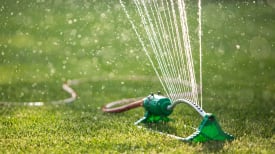
2
Water the lawn
Following that, the lawn should be thoroughly watered once or twice a week for at least 20 minutes. It is better to water thoroughly twice a week than water in smaller amounts more often, as this allows the lawn to form deeper roots which place it in good stead in dry conditions.
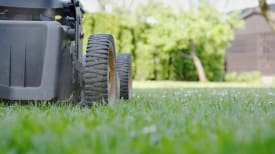
3
Mow the lawn
Don't mow your lawn shorter than 4-5 cm. The taller the blades, the more photosynthesis takes place – and the greener your lawn becomes. As a general rule of thumb, never shorten by more than a third so that you don't weaken the lawn.
Did you know?
A healthy lawn not only looks beautiful, it also has important functions: A healthy 250 m² lawn covers the daily oxygen requirements of a family of four during its growth period!
Find more information on the topic of lawns here
Suitable products for lawn care





